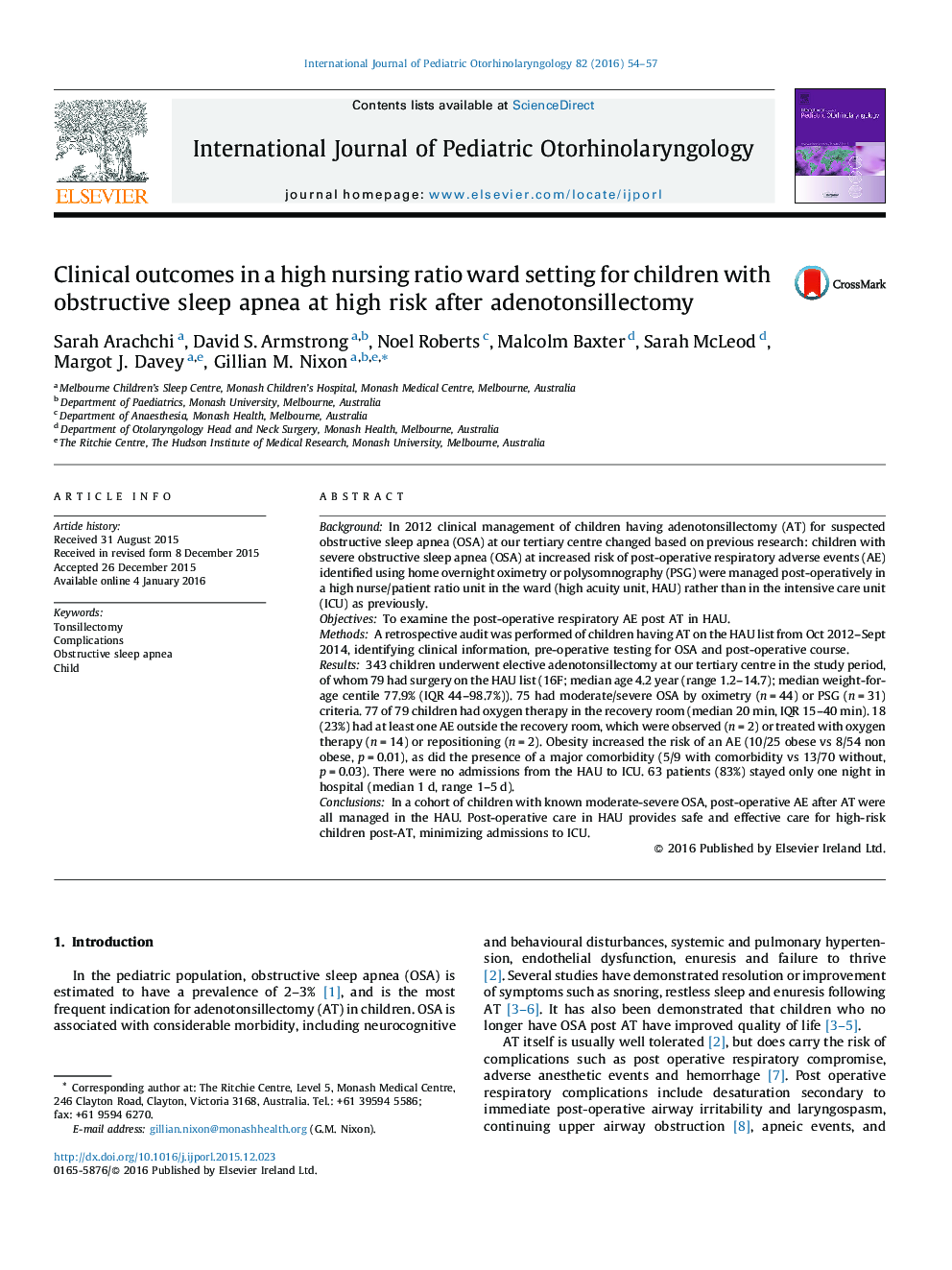| کد مقاله | کد نشریه | سال انتشار | مقاله انگلیسی | نسخه تمام متن |
|---|---|---|---|---|
| 4111361 | 1605986 | 2016 | 4 صفحه PDF | دانلود رایگان |
BackgroundIn 2012 clinical management of children having adenotonsillectomy (AT) for suspected obstructive sleep apnea (OSA) at our tertiary centre changed based on previous research: children with severe obstructive sleep apnea (OSA) at increased risk of post-operative respiratory adverse events (AE) identified using home overnight oximetry or polysomnography (PSG) were managed post-operatively in a high nurse/patient ratio unit in the ward (high acuity unit, HAU) rather than in the intensive care unit (ICU) as previously.ObjectivesTo examine the post-operative respiratory AE post AT in HAU.MethodsA retrospective audit was performed of children having AT on the HAU list from Oct 2012–Sept 2014, identifying clinical information, pre-operative testing for OSA and post-operative course.Results343 children underwent elective adenotonsillectomy at our tertiary centre in the study period, of whom 79 had surgery on the HAU list (16F; median age 4.2 year (range 1.2–14.7); median weight-for-age centile 77.9% (IQR 44–98.7%)). 75 had moderate/severe OSA by oximetry (n = 44) or PSG (n = 31) criteria. 77 of 79 children had oxygen therapy in the recovery room (median 20 min, IQR 15–40 min). 18 (23%) had at least one AE outside the recovery room, which were observed (n = 2) or treated with oxygen therapy (n = 14) or repositioning (n = 2). Obesity increased the risk of an AE (10/25 obese vs 8/54 non obese, p = 0.01), as did the presence of a major comorbidity (5/9 with comorbidity vs 13/70 without, p = 0.03). There were no admissions from the HAU to ICU. 63 patients (83%) stayed only one night in hospital (median 1 d, range 1–5 d).ConclusionsIn a cohort of children with known moderate-severe OSA, post-operative AE after AT were all managed in the HAU. Post-operative care in HAU provides safe and effective care for high-risk children post-AT, minimizing admissions to ICU.
Journal: International Journal of Pediatric Otorhinolaryngology - Volume 82, March 2016, Pages 54–57
